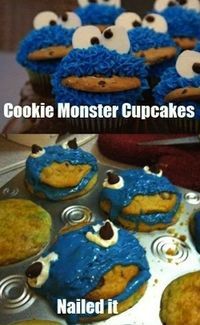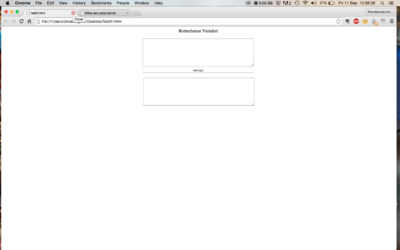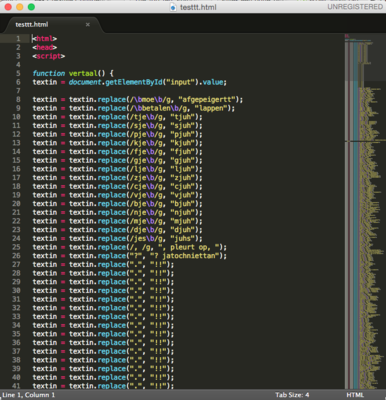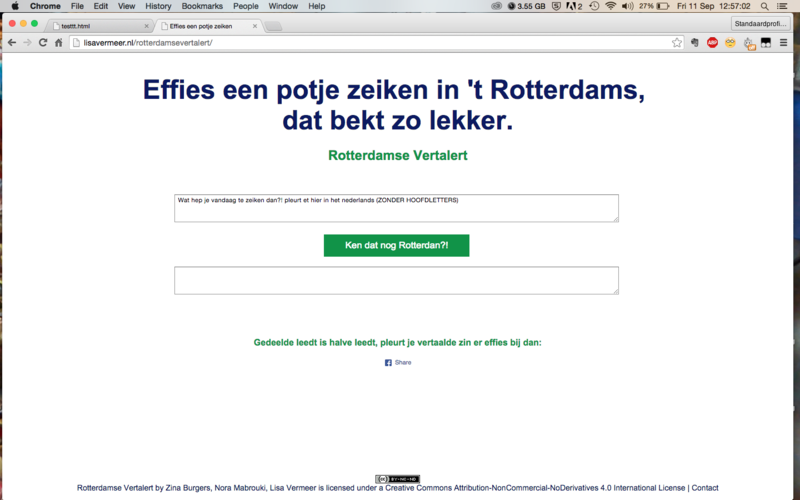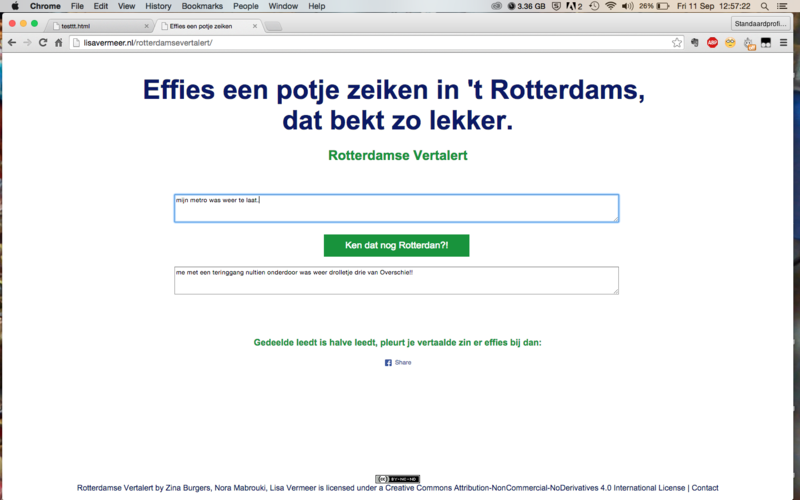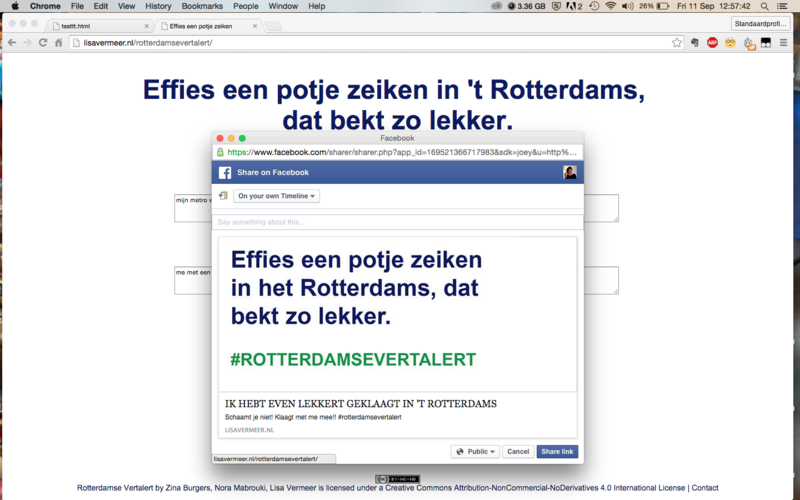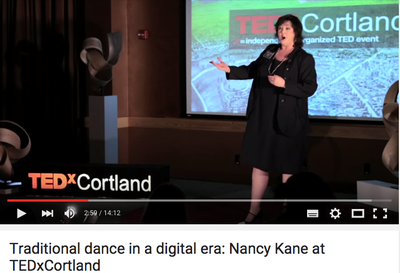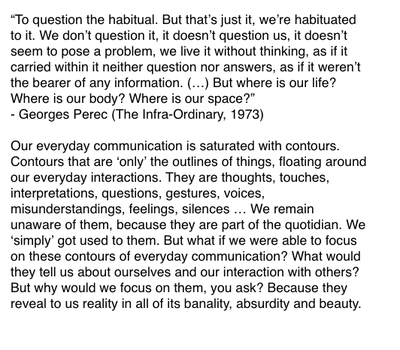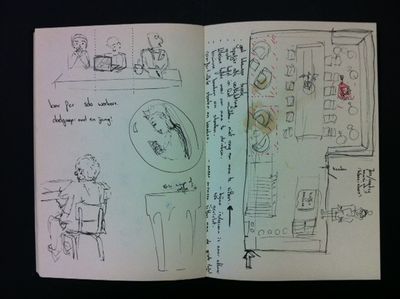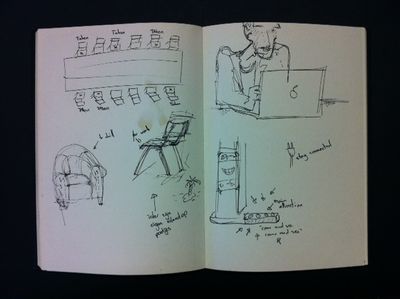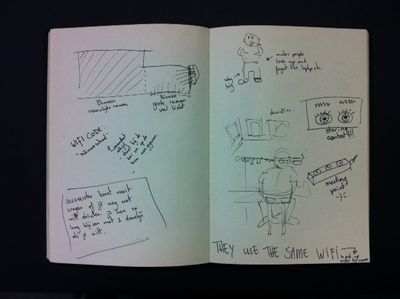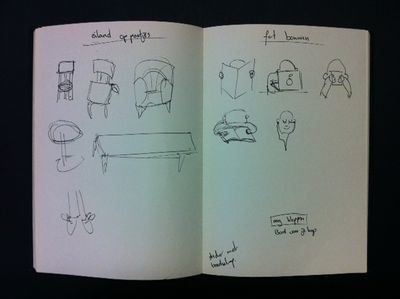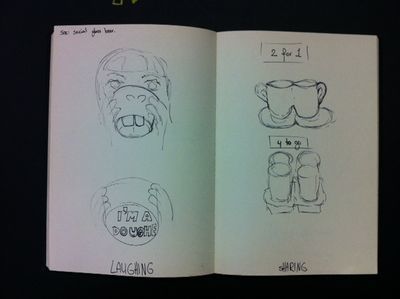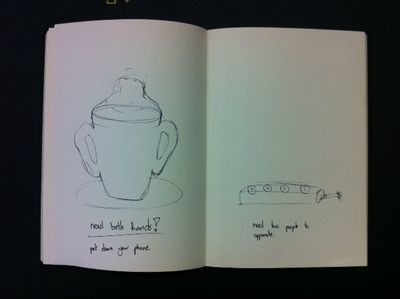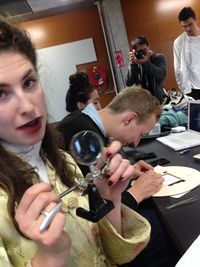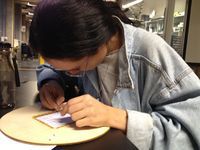Difference between revisions of "User:Brouki"
| Line 201: | Line 201: | ||
[[File:Craftingmemory1.jpg|200px|thumb|left|alt text]] | [[File:Craftingmemory1.jpg|200px|thumb|left|alt text]] | ||
[[File:Craftingmemory4.jpg|200px|thumb|right|alt text]] | [[File:Craftingmemory4.jpg|200px|thumb|right|alt text]] | ||
| + | |||
| + | [[File:Sperm.JPG]] | ||
<br> | <br> | ||
we (Kars, Sophie, Lisa, Nora) have eaten: <br> | we (Kars, Sophie, Lisa, Nora) have eaten: <br> | ||
| Line 218: | Line 220: | ||
<br> | <br> | ||
| + | |||
= '''Crafting Future Memories''' = | = '''Crafting Future Memories''' = | ||
<br> | <br> | ||
Revision as of 00:22, 10 November 2015
Contents
Unravel the Meme – the undervalued power of internet farts
FIRST ASSIGNMENT
Meme: Nailed it
Partner: Meike Brand
The meme ‘Nailed it’ was the starting point of the Unravel the Meme assignment.
We started researching the history and analyzed it from different perspectives.
• Nailed It is a phrase used to express success after achieving something seemingly
difficult with relative ease. It is often found as a caption on image macros or in
sarcastic commentary criticizing the quality of success, especially in response to
attempts at recreating recipes or craft projects. Mimicry involves the practice
of “redoing” (the recreation of a specific text by other people and or by other means.)
SECOND ASSIGNMENT
We grouped up with two other teams. We started with the meme's; 'Tatta's be like', 'Bad luck Brian' and 'Praat Nederlands met me'. And based on our three different meme's we came up with the theme: TRANSLATION. Because you need to know the context of a meme to fully understand it. For example, you need to know the dutch language and the dutch culture to understand 'Tatta’s be like'. So you need to translate. We made 3 works about that.
I participated in the group: 'Rotterdamse Vertalert' together with Zina Burgers and Lisa Kuiken.
Our idea was to build a Rotterdam slang translator.
PROTOTYPE
- First draft of the website and scripting for the first time
RESULT
Rotterdamse Vertalert
We made the ‘Rotterdamse Vertalert’. Our main goal is to connect people through complaining in Rotterdam dialect and slang. Because Rotterdam people like to complain, we invite them with the question: ‘What to complain about today?’ If you type a Dutch complaint in our machine, you will get the translation in Rotterdam language.
Rotterdam people also like to share their complaints, so they can spread the word on social media. We invite them by the sentence: ‘Gedeelde leedt is halve leedt, pleurt je vertaalde zin er effies bij dan. Jatochniettan! Just like ‘Tatta’s be like’ this is only understandable for a small subculture. This exclusion makes the connection between the included ones stronger.
So: Effies een potje zeiken in het Rotterdams, dat bekt zo lekker.
Try it! Rotterdamse Vertalert
THE TWO OTHER GROUPS
Whatever be like
„Whatever be like“ deals with our situation of arriving in Rotterdam and getting to know the meme “Tattas be like” for the first time. Interesting about this meme is, that they are making fun of a culture and at the same time the phenomenon emerges from within the culture. Therefore this meme is an insider joke. We were thinking about the possibility to identify with cultural stereotypes and thought about typical situations from our own cultures. At the same time the question of how a meme appears, develops and is translated to different contexts is important. We would like to create an analogue platform for memes and invite the audience to draw, write or leave comments on sticky notes about something they find (stereo-)typical about themselves or their culture. Within the three days of the exhibition we would to see and show how the drawings and comments develop and if they are influenced by each other. Creating an analogue meme.
Spoken words
Transliteration. Translation. Copy. Paste. Visualisation. Transformation. Wille-Meike Brand, Laura Larissa Lang
Spoken words getting transformed by misunderstandings between analogue and digital language, by translation, reproduction and visualisation. The automated process relates to the development of memes and the way they transform within these progressions.
Unraveling the infra-ordinary (of the 21st century)
~NOTES~
Dinsdag 22-09-'15 | 14:10 Coffee Company Eendrachtsplein Rotterdam
Person #1
scratch his nose, talking to his phone holding directly in front of his mouth/face, while listening to other person true his ear plugs, looks around, not talking so loud, looks like he's talking with somebody about or from work, has his laptop on his lap, scrolling around while he is talking, scratches his nose again, taking a sip of his coffee, sitting a bit uncomfortable, legs together to keep laptop straight, hunch a bit to the front, types with right hand while holding phone with his left hand, hardly moving his hand holding the phone, he's alone but not really alone, sometimes looks around and saw me looking at him, stretching his body now, looking more around him now, switches phone to other hand, and start scrolling with left hand on his laptop now, and scratches face again....
Person #2
reading a book, is alone, wearing glasses, no phone or laptop in sight, finished his coffee already, looks around sometimes, did not see me looking.
Person #3
sitting in front of me alone, still has his jacket on, phone in hand and typing, scrunch over, now puts phone down, puts elbows on table, hand on chin, and looks around, i think he is waiting for somebody, doesn't has his order yet, takes his phone again, swipes and types, looks outside again, and back to the phone, he hasn't looked at me yet, laugh out loud because of something on his phone, head down, phone a bit under the table, eyes down, no other movement what so ever, reading something on his phone..,
Person #4
sitting left of me, has a tablet on the table together with his phone, has a second phone in his bag, using the tablet now, has a little espresso next to him already finished, typing on his tablet, he is alone, he is chatting, scratching his head while reading, uses his right hand to swipe, left hand on head to support, elbows on table, also leaned a bit to the front over the tablet, puts hands down and start using both hands to type now...
Person #5
alone sitting in front of me but a few tables further away, drinking a large coffee, wearing her had and scarf, jacket hardly off shoulders, phone in right hand, phone almost in front of her face, head down to phone, eyes down, legs crossed, sometimes take a sip of drink and then puts phone down for a sec, then back in phone, no facial expressions, scratching her ear, neck, lips, keeps finger on lips, she gets a call, picks up, phone to her ear, now she is hanging over the table, more comfortable then when she was holding the phone before the call, both arms over, one holding the cup of drink, saw me looking, now she sits back on the couch again...
Person #6
two people sitting next to each other, a lady and a men, talking together about something they see on the laptop, talking louder then most people, drinking coffee, looks like friends or colleagues, not really looking at each other while talking, more looking around or revering to laptop...
Interesting points:
- Most people where alone but with phone or laptop.
- A lot of people touches/scratches their faces while calling.
> People change their behavior when they see me looking.
Watched the movie HER
notes:
- De digitale berichten zijn geschreven in een handschrift.
- De kleding is vrij oubollig en bij iedereen hetzelfde.
> Quote "mensen voelen zich pas echt vrij wanneer ze slapen"
[[1]]
fotoreportage van mensen in de trein.
CONCLUSION
People live inside a bubble, where they forget the people/world around them.
The moment they 'snap out of that' they feel watched and directly change their behavior.
Gesprek met Gabrielle:
Concept samengevat: Bubble, gedrag en niet oordelend.
Zo'n bubble creëren mensen ook met een boek of krant. Een subtiele scheiding.
Wat te doen nu: Ga terug en observeer het gehele pand + mensen. Kijk hoe eventueel ze zijn aangepast aan de digitale tijdperk. Of waarom komen mensen daar om te werken etc.
PEOPLE COME TO THE COFFE COMPANY, A SOCIAL SETTING, TO SECLUDE THEM SELF AND WORK.
I WANT TO HELP PEOPLE GET IN TOUCH. BY STIMULATING SOCIAL CONTACT.
IDEAS:
- Pull a number and get seated (not by choice)
- To create a coffee mog that will make sure people will contact.
- To design a power point/plug that needs to people to operate.
CRAFTING MEMORY WORKSHOP
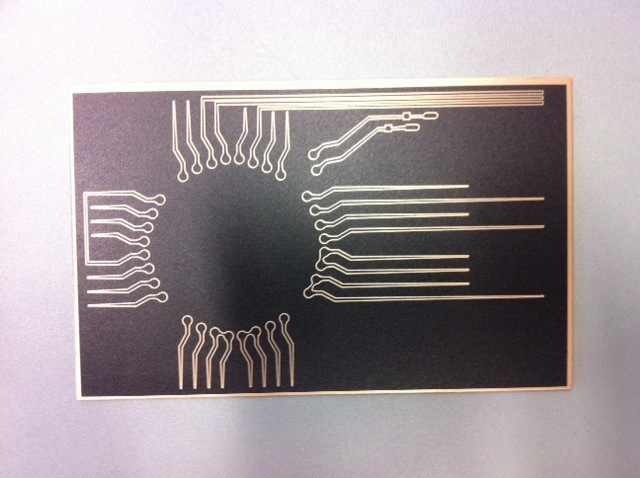
we (Kars, Sophie, Lisa, Nora) have eaten:
a bead (it was kars)
salad
bread with humus
a banana
bread with brie, ham and cheese
krentenbol
bread with salmon
sugar licorice
we crafted:
A critic on holy knowledge. It was supposed to be a circle but the universe wanted it to be a halo. Because that is what people understand. The knowledge is represented in the dataholding copper wire and mini beads. At least, we like to think it does, but it doesn't.
Crafting Future Memories
FUTURE MEMORY ALPHABET
In collaboration with Kars van den Heuvel
Proces/Research
We begonnen met het idee om herinneringen van mensen te verzamelen. We wilden deze herinneringen bundelen en versterken in vorm. Gebaseerd op de zintuigen. Dit concept sprak ons uiteindelijk niet genoeg aan. Maar we kregen hierdoor wel het idee verder te werken met kleur en vorm en zodoende kwamen we op het volgende idee. Het volgende idee was om als tussenstap van letter naar kleur te gaan, de binaire code te gebruiken. Bv. de letter 'H' is in binaire code "01001000" en dat kan je weer omzetten in één derde van een HEX code. Dus dan zouden 3 letters bij elkaar een kleur vormen. Maar, dit bleek te ingewikkeld om te kunnen realiseren in processing. Dit concept sprak ons wel genoeg aan om mee verder te gaan. Dus hebben we uitgezocht hoe we dit wel kunnen laten werken.
We started thinking about en researching for everything we could find about memory. One of the most interesting things we found was that colours stimulate memory and creativity.
Uit onderzoek blijkt:
- Kleur kan de merkherkenning met 80% doen toenemen.
- In een klinische setting kan het gebruik van kleur helpen bij specifieke geheugenproblemen zoals leermoeilijkheden, autisme, dyslexie, enz.
- Gebruik van kleur de leesmoeilijkheden van personen met dyslexie kan reduceren.
- De leessnelheid van mensen met autisme die gebruik maakten van een gekleurde overlay ging er tot 35% op vooruit.
- Kleur wordt ook gebruikt om patiënten te behandelen die aan Alzheimer lijden.
- Kleuren beschikken over het potentieel om onze aandacht te trekken en aandachtsniveau te verhogen, waardoor ze ons dus helpen om dingen beter te onthouden.
The Right Colours Make Data Easier To Read:https://hbr.org/2014/04/the-right-colors-make-data-easier-to-read/
- vlaggen - herinneringen - processing screen shots - kleur test binair
Concept
We designed an alphabet consisting out of colours. We used squares for the 26 letters of the alphabet and cirkels for the digits 0 till 9. We based our colours on an universal palet used for mapping country's. Deze kaart is zo gemaakt dat de kleuren goed te onderscheiden zijn van elkaar. Wat natuurlijk essentieel is tijdens het 'lezen' van een tekst.
End Result
We wrote a program in processing. Where we could translate letters in to colours. After this we were able to translate any text we would like. As an example we translate the wiki page into an publication. You need time and diseplin to read the hole text.
- kleur overzicht - processing screen shots - testen
